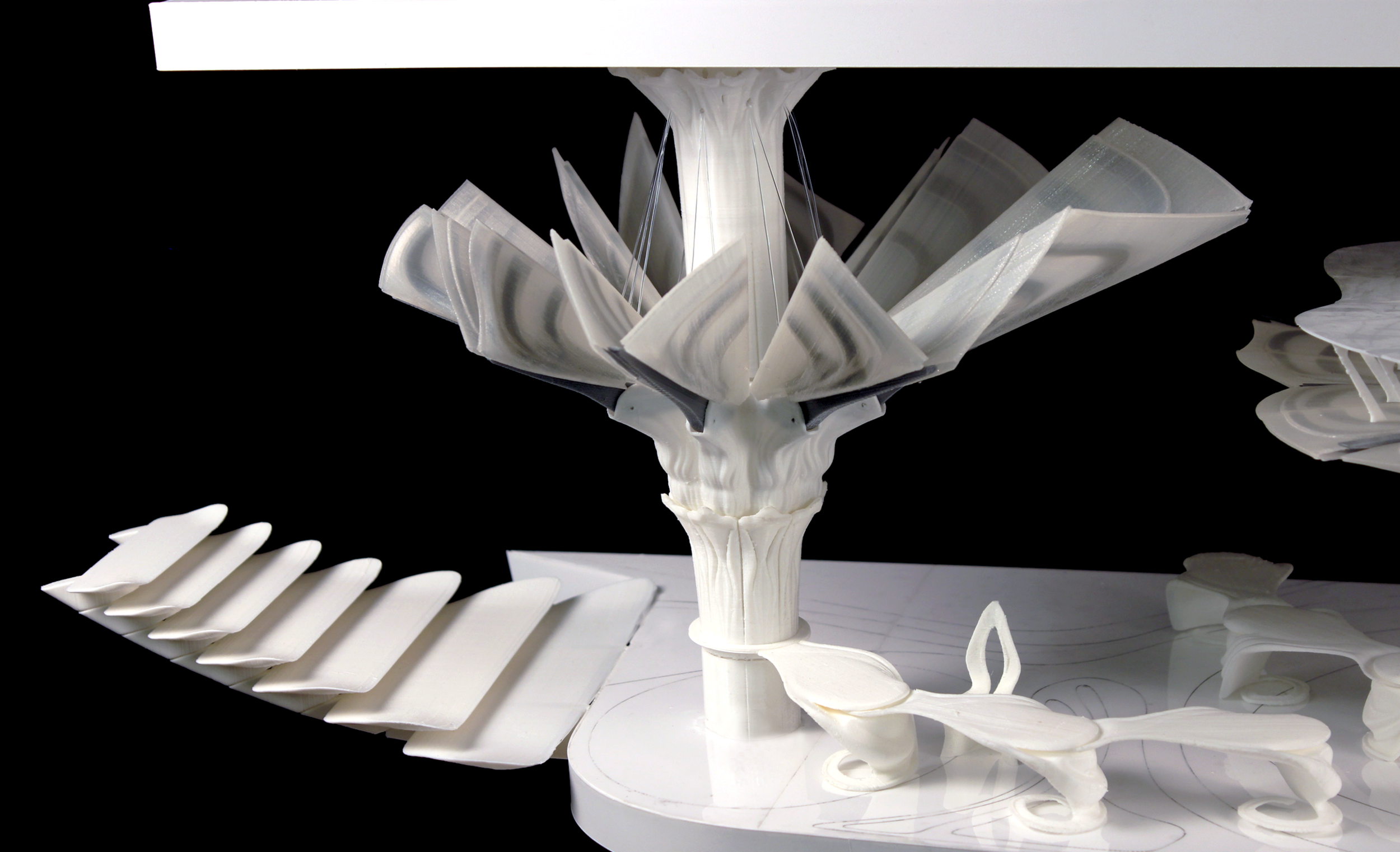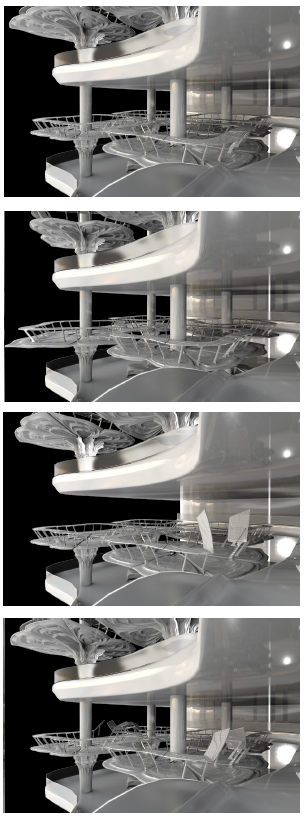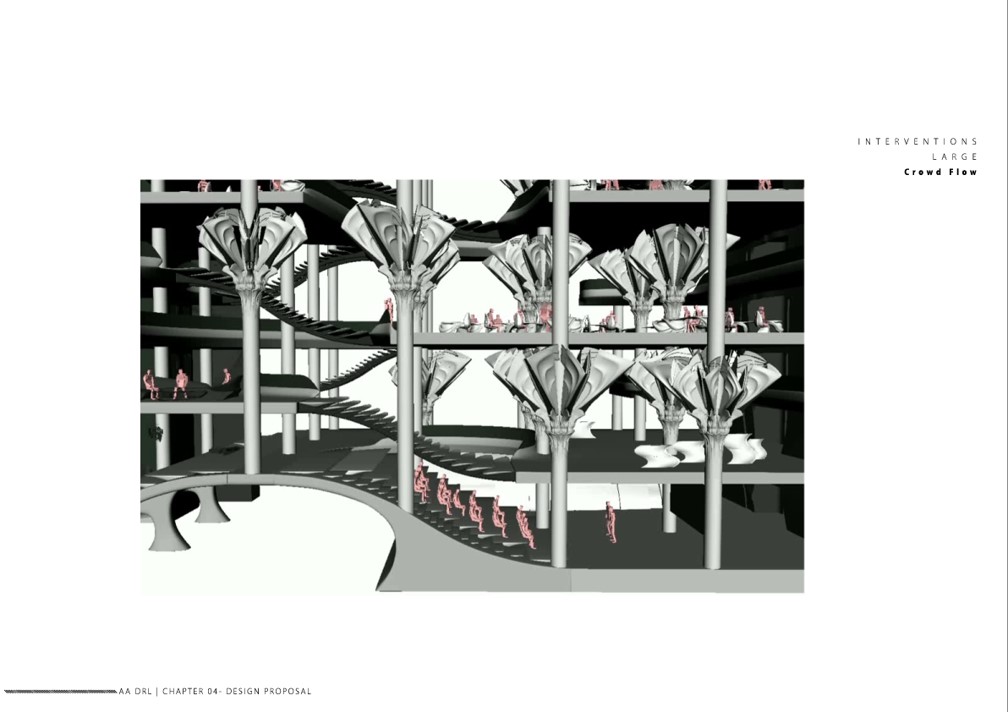BEHAVIOURAL COMPLEXITY 2015-2017
inFORMation
Studio Patrik Schumacher
Tutor Pierandrea Angius
Team Kyle Onaga, Sara Abou Saleh, Dieter Hans Matouschke, Jonathan Shillingford
The ideas of ‘semiotics’ are used within a conceptual framework as opposed to a theoretical set up in the way we execute it in our terms: a transformation triggered by a stimuli. The formal state change can then inform the environment that a change or phenomena is upon it.
If biomimicry is of natural systems, then semiotics is artificial in that, it is the opposite to a natural system. A semiological message is curated and authored, unlike a flower that blooms for photosynthesis; it does so inherently. The subsequent swarm of insects that gather do so from the signal the flower gives, if you are an insect, you can then hope to find cousins and friends near the plant, based on the signal the flower has given. You can also expect to gather pollen, or produce more honey when you receive a collection of signals from many flowers. A swarm of insects can also communicate on the other hand, that a blooming event has taken place, and the reader can then be hinted to look for the flower based on the activity of the swarm. This exchange of information from object to user is what we are defining as a conceptual semiotics within our architectural environment, the relationship to the form is achieved through posture.
We explore the idea of a dual-swarm: our proposed architectural interventions are agents in the system;the crowds are an agent in the system. We therefore have a multiagent system where the active entities inform one another. by making our system of objects in the architectural environment the active agent, they become instilled with personality through postures that are linked to character and dramatization. By making the swarm of users the passive agents, their role as an employee is benefitted by their loss of control; they are allowed to be thrown out of a comfort zone which acts as an interesting stimulus and challenge for new creativity and productivity.




















